 |
| The first tour for our full day in Fairbanks was to Gold Dredge #8. The dredge was opened for tours in 1984. |
 |
| A section of the Trans Alaska Pipeline System (TAPS) runs across the entrance to the Gold Dredge tour so the first information we got was about the pipeline. |
 |
| Looking up the pipeline. The white topped poles are the heat pipes. |
 |
| Next we boarded an open-sided little train. The following are photos of the newspaper they had for us. |
 |
| The Binkley's had to promote their other excursion, which we did later in the day. |
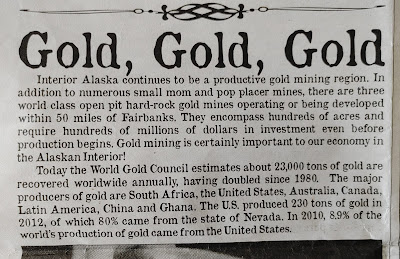 |
| The American Society of Mechanical Engineers has a great history of Gold Dredge #8 if you want further information about everything from the discovery of gold to the operation of the dredge. |
 |
| Their goal was to try to get us to buy something to put our gold in. |
 |
| Our guide was in the first car but tv screens let all of us see him and the rest of the presentation. |
 |
| Presentation on how steam was used to carry processed gravel/dirt to tailings piles. |
 |
| This drilling machine helped the miners get the gold out of the ground. It was a wheel-mounted cable tool rig that held a vertical boiler, vertical steam engine and the operating or hoisting wheels. |
 |
| Pipes used to get water to the dredge. |
 |
| Demonstration on how to pan for gold |
 |
| Gold flakes clinging to top of pan. |
 |
| Everyone takes a place at the panning troughs. |
 |
| Each pan had a small container to put the gold in. |
 |
| Sorry I got a little crooked on this sign. |
 |
| We got to pick up this nugget and take photos. |
 |
| Time to head to the dredge. |
 |
| The mechanical giant was capable of digging 35 feet below the water line. Gravels were dug from the stream bed by the dredge's continuous bucket chain. |
 |
| Gold was trapped on the riffles of the gold tables. |
 |
| Looking up the conveyor. |
 |
| Dredgemaster's Control Room. |
 |
| You can find these dredge buckets for sale on Ebay for $2,500. |
 |
| Here comes our train. We wound back through the area seeing old mining equipment until we found ourselves back where we started. |
 |
| Next we headed off for the Binkley's other money-making tour, The Riverboat Discovery. |
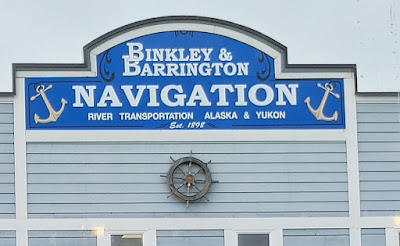 |
| Well first we had a quick, and I mean quick, salad and stew lunch at the Binkley's dock, complete with attached gift shop. Can't go anywhere without a gift shop, can we? |
 |
| The riverboat also had a newspaper. |
 |
| The dogs barked and moved all around while we were there. Especially the ones hitched to the ATV. They were raring to go. |
 |
| From the ship, we get a little information about Chena Village, a recreation of an Alaska Indian village. |
 |
| This is a fish wheel that catches fish. |
 |
| The boat stopped and we all get off to explore Chena Village. |
 |
| We heard a presentation about the clothing worn by the natives. This beautiful parka must be worth a fortune. |
 |
| Stuffed moose |
 |
| From left to right - reindeer, moose and bear |
 |
| Discovery III at Chena Village |
 |
| Fish drying |
 |
| It just needs a few parts. |
 |
| This sled dog was not excited about the presentation. |
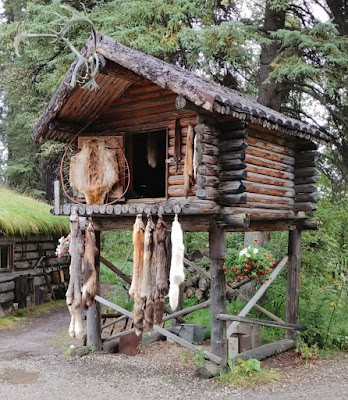 |
| Our guide spoke a little about each of the animals and how their pelts were used. |
 |
| My last wonderful dessert of the trip. This brownie was probably 5" across. |
 |
| Nolan got the strawberry cheesecake. |





































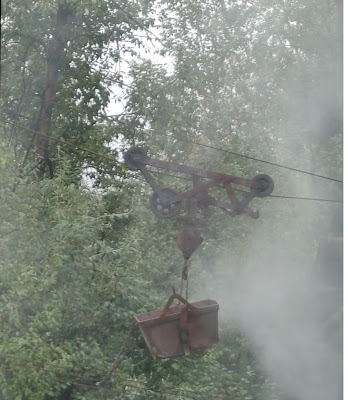












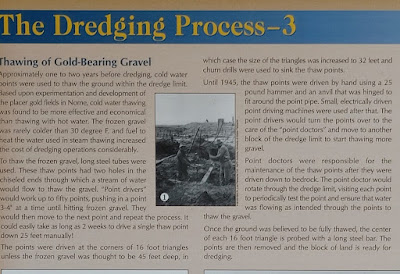





















































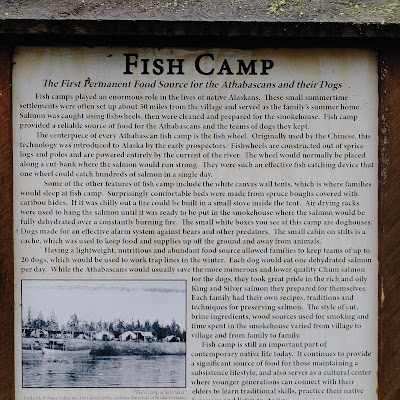



















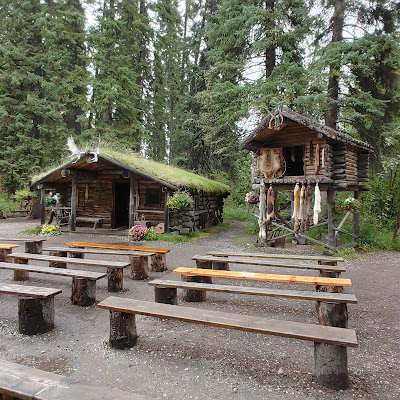
No comments:
Post a Comment